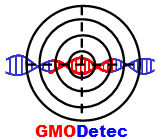Context
Food and feed products produced from genetically modified organisms (GMOs) to be put on the European market have to satisfy the legal framework of the European Union.The placing on the market of GMOs (products containing or consisting of GMOs), e.g. for cropping, import or processing into industrial products, is subject to Directive 2001/18/EC on the deliberate release into the environment of genetically modified organisms.In the framework of protection and information of the consumers, requirements in terms of traceability and labelling were established under the "Novel Food (EC/97/258) and "GM Food and Feed" (EC/1829/2003) regulations. Unintentional movements of GMOs between Member States and exports of GMOs to third countries are governed by Regulation (EC) No 1946/2003 on transboundary movements of genetically modified organisms. Regulations mentioned above determine the following rules:
- Presence of GMOs is strictly regulated by legislation and authorizations are limited to 10 years
- For authorized GMOs, a labelling is required. However, the labeling requirements do not apply to food or feed products containing GMOs in a proportion not higher than 0.9 per cent of the food ingredients considered individually provided that this presence is adventitious or technically unavoidable.
- All non-authorized GMOs in European Union are considered as illegal and a zero-tolerance is applied.
Detection, identification and quantification of GMOs constitute an essential part of the legislation and tools must be available to detect an increasing number of authorized and non-authorized GMOs.
Objectives
The main objective is to develop tools to deliver an “Identity card” to GMOs, even if few informations concerning their sequences are available.In this perspective, CRA-W tackles the problematic under two different aspects.
The first aspect consist to develop a maximum of screening elements to detect the eventual GMOs (matrix approach). Detection tools using PCR and Real Time PCR are developed. For instance, new screening elements were developed for pFMV35S, pRice actin, pSSuAra and pTA29 promoters and t35S terminator. All these screening elements can detect the GM events for which reference materials are available. A first publication of these results was done under the form of a poster (1) at the first Global Conference on GMO Analysis (Como, Italy, June 2008). Other screening elements based on gene detection and on additional promoters and terminators are still in development. The second method consist to highlight by PCR based methods the “plant/GM construct” junctions for which the insertion site is not known. The challenge of the strategy is the obtaining of amplification products with a primer located in a known region (a sequence currently met in GM constructions) and a primer having high possibilities of hybridization in an unknown region. Research is focused on a system using short selective sequences able to hybridize in the unknow region and to produce a PCR product with the “classical” primer located in the known region. Chemistries using Inosin and LNA bases are actually used to enhance the Tm of the short oligos. The imagined strategy could provide a probability of detection linked to the number of primer pairs tested.Description of tasks
Expected results
Results obtained
Contribution
Partners
This project is the fruit of a collaboration involving 3 laboratories constituting the National Reference Laboratory (NRL) for GMO. The 3 partners are the Department Biosafety and Biotechnology of the Institute of Public Health (IPH) in Brussels, the Unit Technology and Food of the Institute for Agricultural abd Fisheries Research in Merelbeke and the Department Quality of agricultural products (DQPA) of the Walloon Agricultural Research Center (CRA-W) in Gembloux.CRAW off coordinator
Berben GilbertFunding
- SPF Public Health





